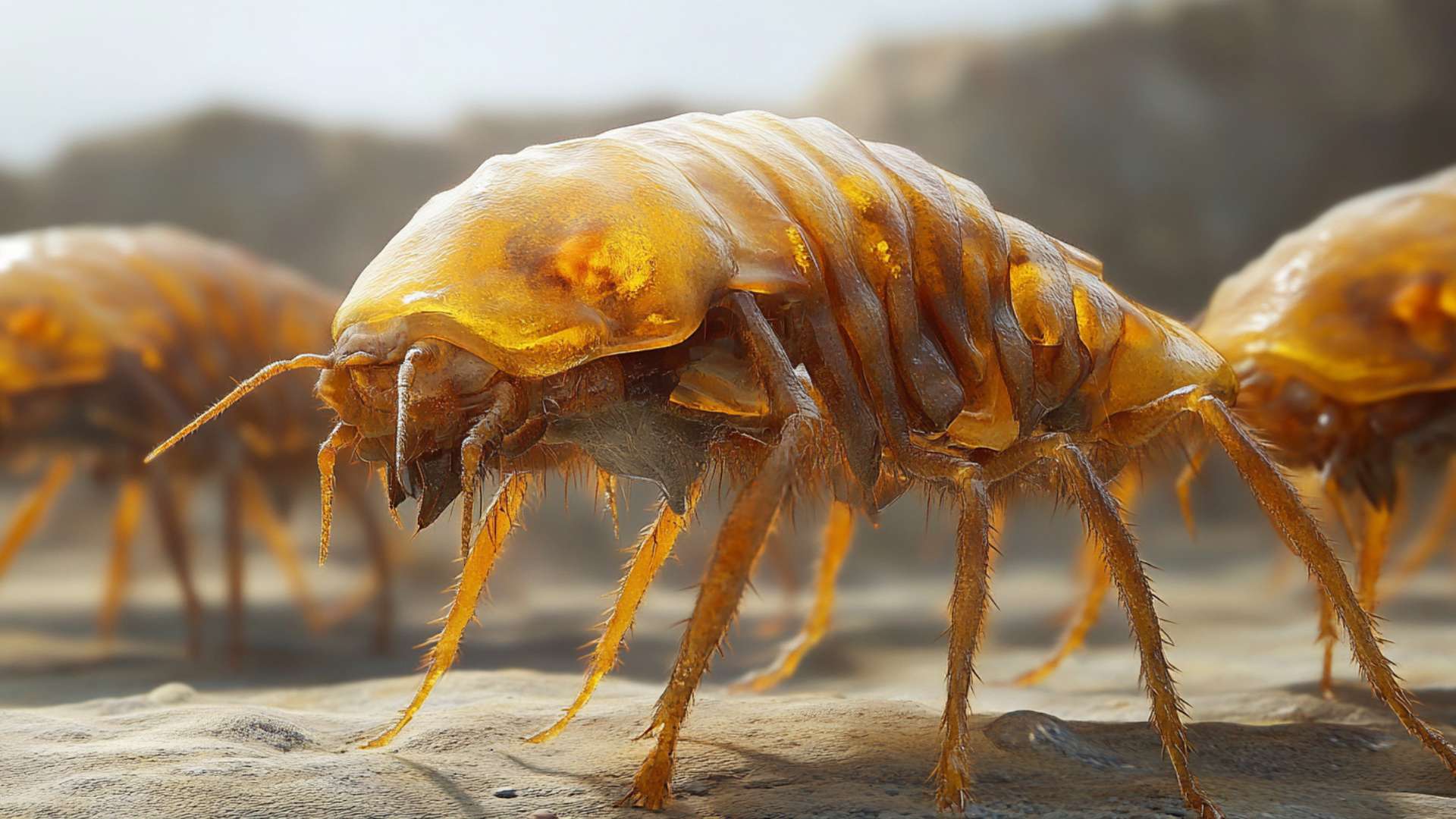Flea allergies in pets can be a real nuisance, causing discomfort and distress to our beloved furry friends. Flea allergy dermatitis (FAD) is the most common dermatologic disease seen in domestic dogs and cats. These tiny parasites, known as fleas, are the most common external parasite found on pets worldwide.
They have mastered the art of survival, making them a formidable adversary for pet owners. When a pet with flea allergies is bitten by a flea, their immune system goes into overdrive, triggering an allergic reaction.
The saliva from the fleas contains proteins that are responsible for this exaggerated immune response. These allergenic proteins cause intense itching and irritation on the pet’s skin, leading to scratching, biting, and excessive licking.
Common symptoms exhibited by pets with flea allergies
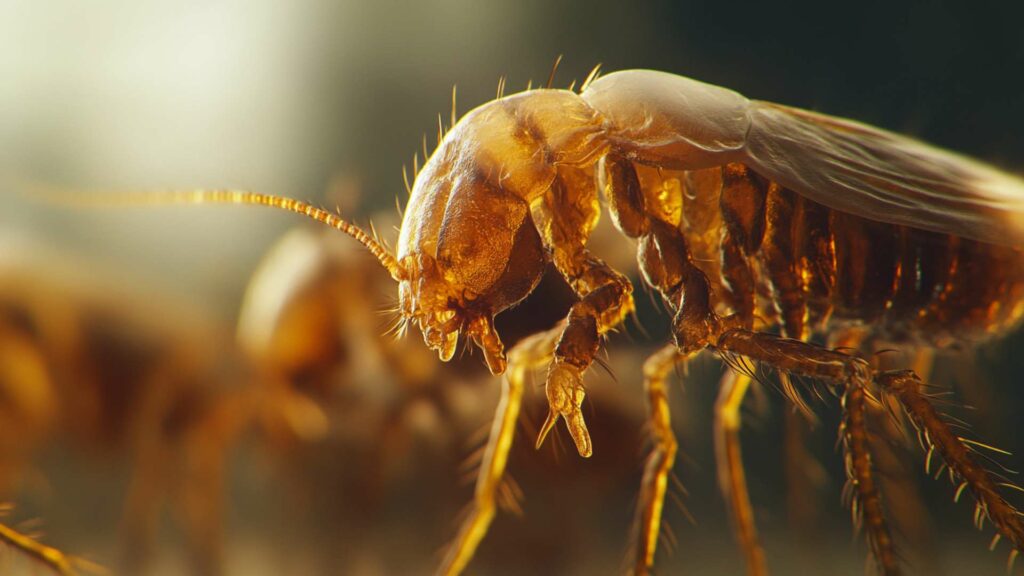
Pets with flea allergies often show a range of distressing symptoms. The most noticeable among these is incessant scratching or chewing at certain areas of their body.
You may observe your pet repeatedly biting or licking certain spots on its skin as if trying desperately to relieve itself from unbearable itchiness. The affected areas usually include the base of the tail, lower back, groin region, abdomen, or areas around the neck and ears.
In severe cases of FAD, some pets might develop rashes or hair loss in these areas due to excessive self-trauma caused by scratching. Secondary bacterial infections can also occur due to open sores created by constant scratching.
These secondary skin infections may manifest as redness, swelling, oozing discharge from wounds, or pustules on your pet’s skin. If left untreated for long periods of time or improperly managed through rigorous flea treatment and prevention techniques – such as regular washing of your pet’s bedding – these secondary infections can become serious and require veterinary intervention.
Overall, flea allergies can significantly affect the quality of life for our pets. Identifying and managing these allergies promptly is crucial to ensure our furry companions are free from discomfort and their skin remains healthy.
Detailed explanation of the flea life cycle and stages
To effectively manage flea allergies in pets, it is crucial to understand the life cycle of fleas. Fleas undergo a complete metamorphosis, passing through four distinct stages: eggs, larvae, pupae, and adults.
The entire life cycle can take anywhere from two weeks to several months, depending on environmental conditions. It all begins with adult fleas laying eggs on the host animal.
These tiny white eggs are usually deposited in areas where the pet spends a lot of time – like their bedding or favorite resting spots. Within a few days, the eggs hatch into larvae.
These small worm-like creatures are blind and avoid light by burrowing into carpets, furniture upholstery, or cracks in flooring. As larvae grow, they molt several times before progressing to the pupal stage.
Pupae are cocooned within sticky silken threads and can remain dormant for up to several months until stimulated by factors such as vibrations or carbon dioxide released by a nearby animal. Once triggered, adult fleas emerge from their cocoons and begin their search for a host.
How fleas infest pets and cause allergic reactions
Fleas infest pets primarily through direct contact with infested animals or environments where fleas thrive. They possess powerful hind legs that allow them to jump onto their hosts from grasses or other nearby surfaces frequented by feral animals or strays carrying fleas. Flea bites can be painful for pets due to the flea’s sharp mouthparts that penetrate the skin.
When a pet is hypersensitive to flea saliva due to an allergic reaction, it develops what is known as flea allergy dermatitis (FAD). This condition is one of the most common dermatologic diseases in dogs and cats worldwide.
When an allergic pet is bitten by a flea carrying specific salivary antigens, it triggers an immediate immune response, causing intense itching and discomfort. Constant scratching, biting, and chewing at the dog’s skin can lead to hair loss, redness, and even infected sores.
Flea allergy dermatitis is often diagnosed through detailed history-taking, physical examination findings, and in some cases, intradermal allergy tests or skin tests. Identifying flea allergy dermatitis diagnosed as allergies early on is crucial for effective management and prevention of further allergic reactions.
By understanding the life cycle of fleas and how they infest pets to cause allergic reactions, pet owners can take necessary precautions to protect their furry companions. Regular use of flea control products such as topical or oral medications can significantly reduce the risk of flea infestations.
Additionally, employing rigorous flea prevention strategies like washing pet bedding frequently and using flea collars or other flea preventative medication can help keep these pesky parasites at bay. Remember that managing flea allergies requires both addressing the immediate symptoms and implementing long-term preventive measures to ensure your pet’s comfort and well-being.
Differentiating between flea bites and flea allergy dermatitis (FAD)
When it comes to identifying flea allergies in pets, it is crucial to distinguish between regular flea bites and the more severe condition known as flea allergy dermatitis (FAD). While most dogs and cats may experience mild itching or irritation from a single flea bite, animals with FAD have an exaggerated allergic response that can lead to intense scratching, hair loss, and the formation of infected sores. One way to differentiate between the two is by closely examining your pet’s skin.
Regular flea bites typically leave small red bumps or welts which can be seen on any part of their body. In contrast, pets suffering from FAD may exhibit extensive areas of redness, inflammation, and scabbing particularly around their rear end, tail base, groin area, or inner thighs.
Another clue is the presence of “flea dirt,” which looks like small black specks resembling pepper flakes on your pet’s fur. This is actually dried blood excreted by fleas after feeding on your pet.
Diagnostic methods for confirming flea allergies in pets
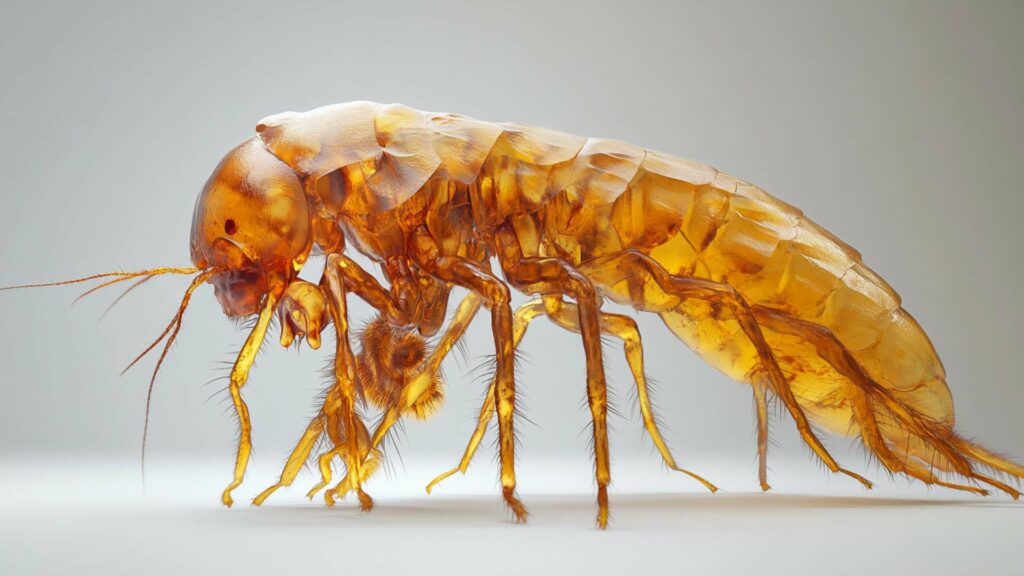
Pet owners who suspect that their furry companions are suffering from flea allergies should seek veterinary guidance for an accurate diagnosis. While it may be tempting to self-diagnose based on external symptoms alone, professional evaluation is necessary to rule out other potential causes such as skin diseases, atopic dermatitis, or food allergies. During a veterinary visit specifically focused on diagnosing flea allergies, several diagnostic methods may be employed.
A thorough physical examination will help identify any clinical signs of fleas or related skin conditions such as secondary bacterial infections resulting from excessive scratching. In some cases where fleas are not visually apparent due to grooming behaviors or infestations are minimal but still causing allergic reactions in the pet, specialized blood tests may be conducted.
These tests can detect the presence of histamine-like compounds released as a response to flea allergens. By confirming the presence of flea-specific antibodies, these tests can provide definitive evidence of a flea allergy in pets.
Identifying flea allergies in pets requires differentiating between regular flea bites and the more severe condition known as flea allergy dermatitis (FAD). Close examination of your pet’s skin and the presence of “flea dirt” are key indicators for distinguishing between the two.
However, it is important to seek professional veterinary guidance to confirm a diagnosis and rule out other potential causes. Physical examinations and specialized blood tests can provide accurate results, ensuring proper treatment for pets suffering from flea allergies.
Prevention Strategies for Flea Allergies
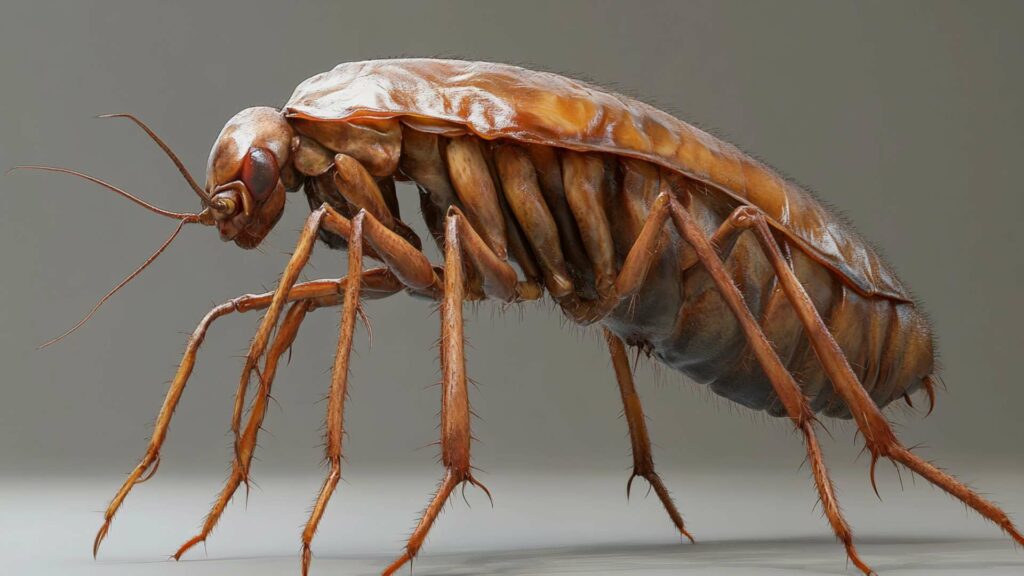
When it comes to managing flea allergies in pets, proactive grooming plays a vital role in preventing those pesky critters from turning your furry friend into an itchy mess. Regular grooming not only helps maintain your pet’s hygiene but also allows you to detect fleas early on before they multiply and cause havoc. To effectively prevent fleas from infesting your pet, incorporate a few simple grooming practices into their routine.
Brushing your pet regularly is an effective way to keep their coat clean and free of fleas. Not only does the act of brushing remove dirt, dead hair, and tangles, but it also gives you an opportunity to check for any unwelcome guests lurking in their fur.
When brushing your pet, pay close attention to areas where fleas tend to hide such as around the neck, behind the ears, and on the dog’s legs. Look out for tiny brown insects scurrying away or small black specks that resemble pepper—this is commonly referred to as flea dirt and is actually flea excrement.
To further enhance your efforts in preventing flea infestations, make sure you utilize a fine-toothed comb during grooming sessions. These combs are specifically designed with closely spaced teeth that can catch even the smallest of fleas or their eggs.
Run the comb through your pet’s coat slowly and meticulously while focusing on problem areas. If you spot any fleas or flea eggs caught between the comb’s teeth, gently remove them using a tissue or by quickly dipping the flea comb into warm soapy water.
Environmental Control Measures to Minimize Flea Populations at Home
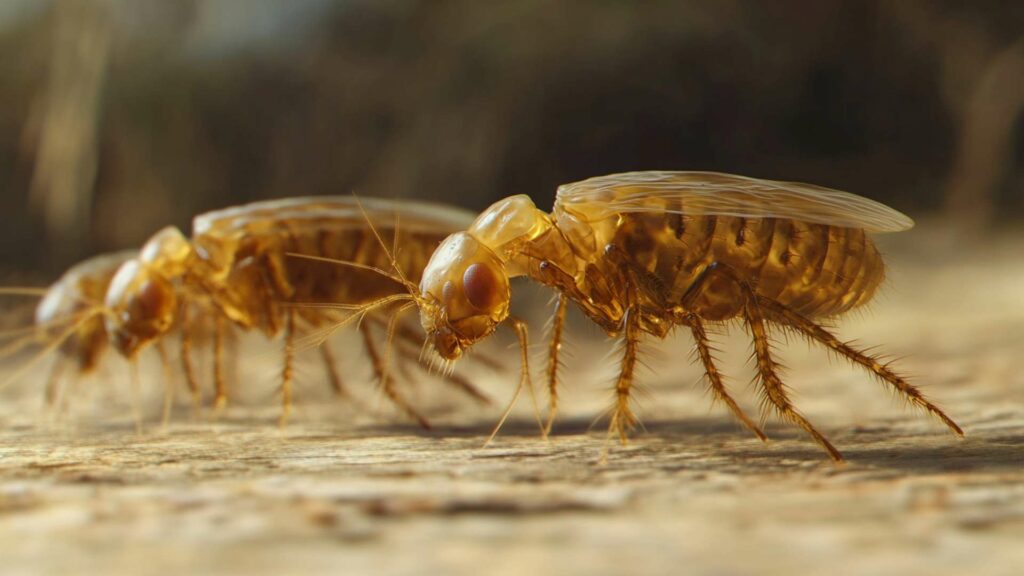
While grooming is important, it’s equally crucial to tackle the issue of fleas at its source—your home environment. Fleas have a remarkable ability to reproduce rapidly, making it imperative to implement stringent environmental control measures. By following a few simple steps, you can greatly reduce the flea population in your living space and keep your pet protected from flea allergies.
Vacuuming Carpets, Furniture, and Pet Bedding Regularly
One of the most effective methods for managing fleas in your home is through regular vacuuming. Fleas are not only found on your pet but also in their environment, especially carpets, furniture, and bedding.
Vacuuming these areas thoroughly helps remove flea eggs, larvae, and pupae. Be sure to pay extra attention to crevices and corners where fleas tend to hide.
To further enhance the effectiveness of vacuuming, consider sprinkling some diatomaceous earth on carpets before vacuuming. This natural powder acts as a desiccant that dehydrates the fleas upon contact.
Treating Indoor and Outdoor Areas with Pet-Safe Insecticides
To complement regular vacuuming efforts and prevent reinfestation, it’s crucial to treat both indoor and outdoor areas with pet-safe insecticides. These products specifically target fleas while ensuring the safety of your furry companions.
Apply these insecticides as directed by the manufacturer on carpets, flooring cracks or crevices, upholstery, pet bedding areas, and any other places where fleas may hide indoors. Outdoors, pay attention to shady areas or spots where your pets spend time lounging or playing.
Remember to follow all safety precautions mentioned on the product labels when using these insecticides. By incorporating these prevention strategies into your routine care for pets prone to flea allergies, you enhance their quality of life by reducing exposure to the most common skin disease caused by fleas.
Taking regular grooming seriously, using fine-toothed combs for thorough inspections, and implementing environmental control measures will go a long way in keeping your pets free from severe flea infestations. Remember, if you suspect your pet has severe flea infestation or allergies or are unsure about the best course of action, consult with a veterinary dermatologist who can conduct specialized blood tests or skin tests to determine the best treatment plan for your furry companion.
Treating Flea Allergies in Pets
Topical Treatments for Immediate Relief from Itching and Inflammation
Pet owners can breathe a sigh of relief knowing that there are effective topical treatments available to alleviate their furry friends from the torment of flea allergies. These treatments come in the form of spot-on medications, which are applied directly to the pet’s skin, usually between the shoulder blades or at the base of the neck.
The active ingredients in these spot-on treatments, such as fipronil or imidacloprid, target fleas and help relieve itching and inflammation. When it comes to spot-on medications, proper application techniques cannot be emphasized enough.
Dog owners must carefully follow the instructions provided by manufacturers to ensure maximum effectiveness and safety for their pets. It is important to part the fur down to the skin so that the medication reaches its intended target.
Additionally, ensuring that your pet does not lick or scratch at the application site is crucial to prevent ingestion of potentially harmful chemicals. It’s important to keep in mind that while topical treatments provide immediate relief from itching and inflammation caused by flea allergies, they do not eliminate fleas entirely from your pet’s environment.
Fleas have a complex life cycle involving eggs, larvae, pupae, and adult fleas. Treating both your pet and its surroundings is essential for comprehensive flea control.
Fipronil and imidacloprid are powerful insecticides commonly found in spot-on medications designed specifically for treating flea allergies in pets. These ingredients effectively kill adult fleas on contact and also disrupt their nervous systems, preventing them from reproducing further.
Fipronil, a widely used ingredient, not only targets adult fleas but also controls ticks and chewing lice. It remains active for several weeks after application, providing long-lasting protection for your pet.
Imidacloprid, on the other hand, specifically targets adult fleas and prevents their eggs from hatching. Spot-on treatments containing these ingredients are generally safe for pets when used correctly.
However, it is crucial to consult with your veterinarian before applying any medication to ensure the appropriate dosage based on your pet’s weight and age. Additionally, different flea products used may have varying levels of efficacy against fleas in different regions or climates.
Importance of Following Proper Application Techniques
Proper application techniques are vital for spot-on flea treatments to be effective in managing flea allergies in pets. The success of the treatment largely depends on how well you follow the instructions provided by the manufacturer. Before applying any spot-on medication, carefully read all instructions and warnings.
Part the fur at the designated area to expose the skin and apply the prescribed amount directly onto it. Ensure that no excess product drips onto other areas or is ingested by your pet during grooming.
It’s important to remember that spot-on treatments should not be used on puppies or kittens below a certain age specified by the product label or veterinarian recommendations. Additionally, never use dog-specific treatments on cats as they may contain ingredients toxic to felines.
Maintaining regularity in spot-on flea spray treatments as directed by your veterinarian will help keep fleas at bay and provide ongoing relief from flea allergies in sensitive dogs. Remember that these topical treatments should always be part of a comprehensive flea control program that includes environmental measures such as regular cleaning, vacuuming carpets and furniture, treating bedding areas, and addressing outdoor spaces where fleas may thrive.
Long-term Management of Flea Allergies
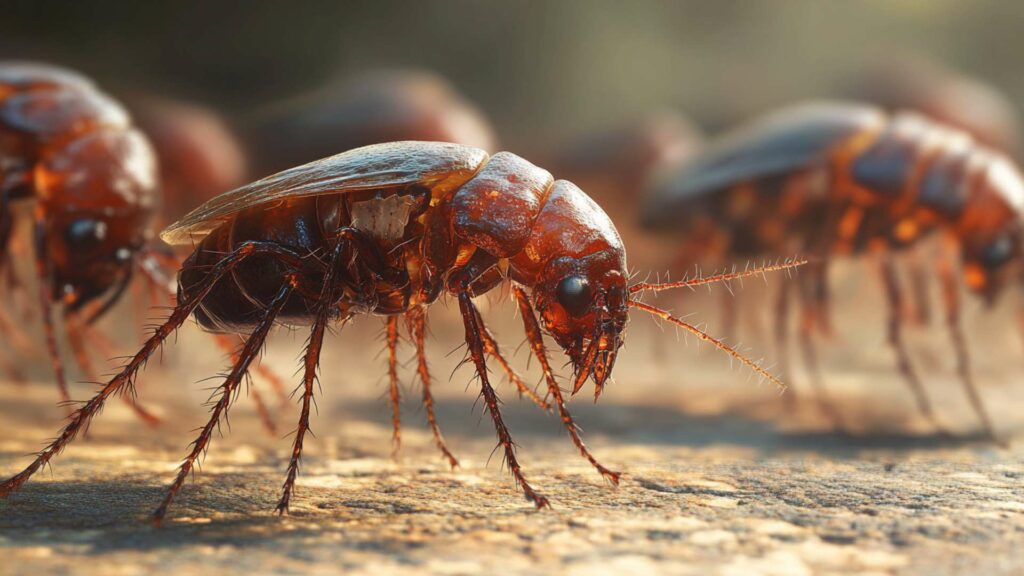
Oral Medications for Controlling Fleas on a Regular Basis
When it comes to managing flea allergies in pets, oral medications can be a highly effective long-term solution. These medications are designed to control fleas on a regular basis, preventing flea infestations occur, and reducing the risk of allergic reactions in your furry friend. There are various types of oral medications available on the market, including chewable tablets and flavored pills, making it easier to administer them to your pet.
Chewable tablets are an excellent option for dog owners who struggle with traditional methods of medication administration. These tablets come in tasty flavors that dogs find appealing, making it less challenging to get your pet to take their medication.
Some chewable tablets contain active ingredients like lufenuron or spinosad, which inhibit flea reproduction or kill adult fleas upon ingestion. Flavored pills are another popular choice among pet owners.
These pills often mimic treats and have enticing flavors that can entice even the pickiest eaters. They usually contain ingredients such as nitenpyram or afoxolaner, which quickly eliminate fleas by interfering with their nervous system.
When using oral medications to manage flea allergies in pets, it’s crucial to follow dosage instructions carefully. Dosages will vary based on your pet’s weight and age, so it’s essential to consult with your veterinarian before starting any treatment regimen. The dosage instructions provided by the manufacturer should always be followed unless specifically advised otherwise by your veterinarian.
Administering an incorrect dose can potentially lead to ineffective results or adverse side effects for your beloved companion. To determine the appropriate dosage for your pet, consider their weight as well as any specific health conditions they may have.
Your veterinarian will be able to calculate the correct dosage based on these factors and provide you with clear instructions on how to administer the medication. Remember, consistency is key when it comes to long-term management of flea allergies.
Make sure to maintain a regular schedule for administering oral medications and monitor your pet for any signs of improvement or adverse reactions. Regular communication with your veterinarian will ensure that you’re providing the best care possible for your furry friend.
Oral medications are an essential tool in managing the most flea infestations and allergies in pets over the long term. Chewable tablets and flavored pills offer convenient options for administration while effectively controlling and preventing flea infestations.
By following the appropriate dosage instructions based on your pet’s weight and age, you can ensure their well-being and provide relief from the discomfort caused by flea and allergy dermatitis in dogs. Remember to consult with your veterinarian for personalized guidance tailored to your pet’s specific needs.
Complementary Therapies for Managing Flea Allergies in Pets
Natural Remedies for Soothing Flea Allergy Symptoms
While traditional flea control methods are essential, some pet owners may also seek natural remedies to help alleviate the discomfort caused by flea allergies in their furry companions. It’s important to note that these remedies should not replace medical advice or prescribed treatments, but they can provide additional support. One popular natural remedy is oatmeal baths, which can soothe itchy skin and reduce inflammation. Oatmeal contains compounds that have anti-inflammatory properties and can provide temporary relief from itching. Another option is applying aloe vera gel topically to affected areas. Aloe vera has cooling properties and can help calm irritated skin. Additionally, herbal rinses made from infusions of herbs like chamomile or calendula may offer some relief. These herbs have soothing qualities and may help reduce redness and inflammation when used as a rinse after bathing your pet.
Nutritional Supplements to Strengthen the Immune System
Supporting your pet’s immune system is crucial in managing flea allergies as a strong immune system can better tolerate allergens and reduce the severity of allergic reactions. Including certain supplements in your pet’s diet may help strengthen their immune response. Omega-3 fatty acids, found in fish oil supplements, have anti-inflammatory properties that can aid in reducing itching and inflammation associated with flea allergies. These fatty acids also support overall skin health, promoting a strong barrier against allergens. Probiotics are another valuable supplement as they enhance gut health, which is closely linked to the immune system. A healthy gut microbiome helps regulate immune responses and reduces the likelihood of developing allergic reactions.
Conclusion
Managing both flea infestation and allergies in pets requires a comprehensive approach that combines preventive measures, medical treatments, and complementary therapies. By diligently implementing flea control methods, such as regular grooming, environmental control, and the use of topical or oral flea preventives, pet owners can significantly reduce the risk of flea infestations and subsequent allergic reactions.
In addition to these preventive measures, natural remedies can provide temporary relief from itching and inflammation. Incorporating supplements like omega-3 fatty acids and probiotics into your pet’s diet may also strengthen their immune system, aiding in the management of flea allergies.
Remember that while it is possible to successfully manage flea allergies in pets with diligent care, seeking advice from a veterinarian is crucial for an accurate diagnosis and appropriate treatment plan. With proper management strategies in place, pets suffering from flea allergies can lead happy, comfortable lives free from the discomfort caused by fleas.
Exterminate fleas with D-Termination: The leading pest control service in Las Vegas!

If you’re facing flea issues on your Las Vegas property, turn to D-Termination for assistance. Our expert team excels in eliminating flea infestations and restoring comfort and peace to your space. Bid farewell to fleas—opt for D-Termination for effective pest control today!
Reach out to us at 702-919-6310 or visit dtermination.com to schedule your flea control service and reclaim your space from these bothersome pests.
Frequently Asked Questions:
Flea allergies can be treated with antihistamines, corticosteroids, and flea control measures.
Vets treat flea allergy dermatitis in pets using medications like corticosteroids, antihistamines, and recommending flea prevention.
Natural remedies for flea allergies include herbal shampoos, essential oils like lavender or chamomile, and a well-maintained, flea-free environment.
At home, treating cat flea allergy dermatitis involves regular grooming, using a flea comb, and creating a flea-free living space. Consult a vet for severe cases.

